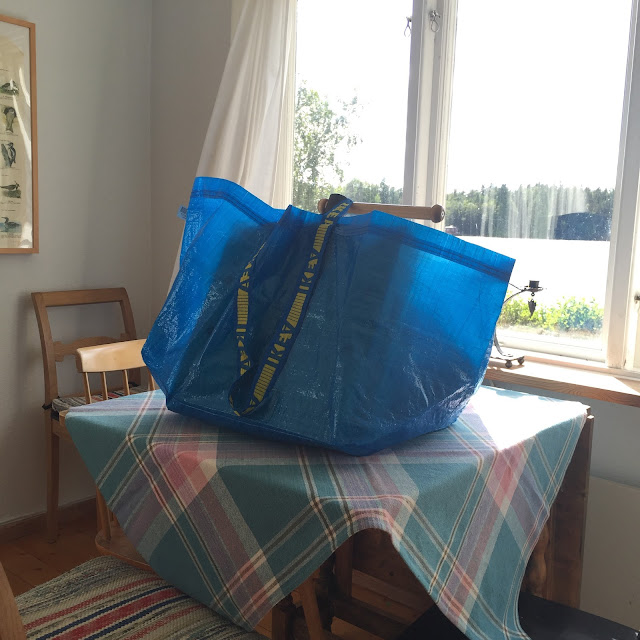Isn't it odd that I manage to build like crazy when I'm working full time and travel around the world? And now during the summer when I am free I can't build anything? Well it's sort of true. When I went to the summer house a few weeks ago, after the hiking week in the mountains, I hadn't anything suitable to bring with me. Everything is resawn, bent and to some extents already glued. Neck blanks were abubdant and prepared. Of course I eyed my dad's mahogany stash as always but I have my own to work through.
Here's what I occupied myself with.
But today I came back from the cottage to the apartment, and the humble lair of the Argapanator (my workshop). So I picked up where I left off and continued to work on the neck blanks. Remember I told you I was gonna reinforce them? I made two slots in each, about 10 mm deep. Then I ripped some slats from 3 mm aero plywood, and glued them in. I honestly think they'll do the same as the carbon fibre rods I've mucked about with, and it saves me from using epoxy and ruining my tools.
It was a bit messy. The slots were tight and glue squeezed out nearly everywhere. But I made eight necks in one go.
Here's a shot of one of them. The plywood is crazy, I think there are seven layers in those 3 mm. Really strong and stiff stuff.
So after scraping off excess glue I plane the slats flush (trying not to plane away those knife lines I made a few weeks back).
Tomorrow I'm off to another cottage, and dig this, one WITHOUT A WORKSHOP at all. So I'm toying with the idea of bringing some tools. And a vise. And eight neck blanks. Too bad my borrowed car is really tiny. Stay, as they say, tuned.






















